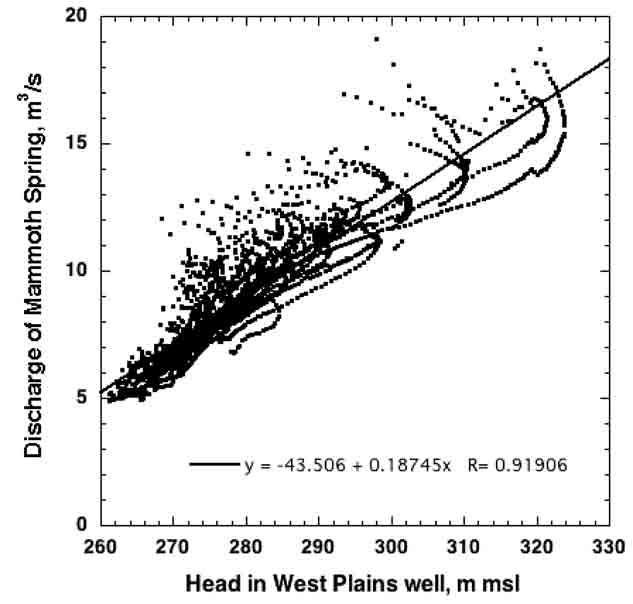A Darcian Model for the Flow of Big Spring and the hydraulic head in the Ozark aquifer, Missouri, USA
DOI:
https://doi.org/10.3986/ac.v39i2.106Povzetek
The complex discharge hydrographfor Big Spring, Missouri, can be described as the sum of two terms governed by Darcy’s Law. The dominant, long-term component is proportional to the regional hydraulic gradient, and constitutes about 80% of the average flow of 12.6 m3/s. Superimposed on this is a transient component witha time-constant of about 1.5 days that represents the Darcian response to sharp, rainfall-driven pulses on the head of the shallow groundwater system. This transient component delivers about 20% of the average total flow, but over short intervals can exceed the long-term component. However, the long-term component is so large that the ratio of record highflows to the average flow is only about 4x for Big Spring, and 1.5 to 4.5x for most other large Ozark springs; for comparison, this ratio is 10 to 3000x for most surface streams in Missouri. The strong correlation between the discharge of the large springs and the head in the Ozark aquifer permits the extension of the Darcian rainfall-runoff model to predict groundwater levels in wells.Prenosi
Podatki o prenosih še niso na voljo.

Prenosi
Objavljeno
2010-06-01
Kako citirati
Criss, R. E. (2010). A Darcian Model for the Flow of Big Spring and the hydraulic head in the Ozark aquifer, Missouri, USA. Acta Carsologica, 39(2). https://doi.org/10.3986/ac.v39i2.106
Številka
Rubrike
Original papers
Licenca
Avtorji jamčijo, da je delo njihova avtorska stvaritev, da v njem niso kršene avtorske pravice tretjih oseb ali kake druge pravice. V primeru zahtevkov tretjih oseb se avtorji zavezujejo, da bodo varovali interese založnika ter da bodo povrnili morebitno škodo.
Podrobneje v rubriki: Prispevki




